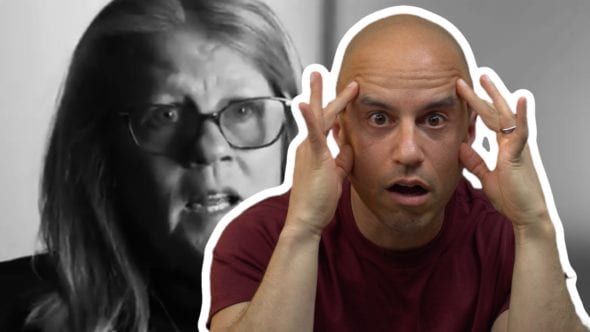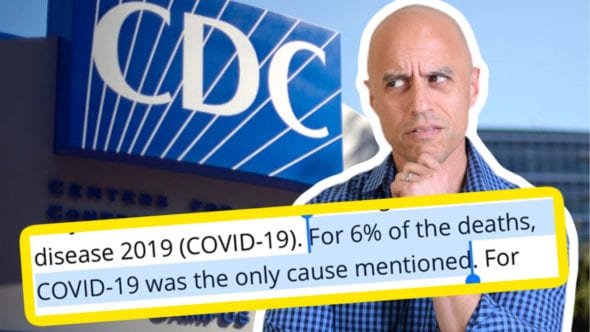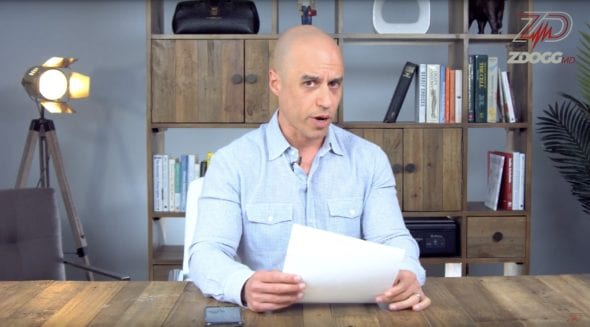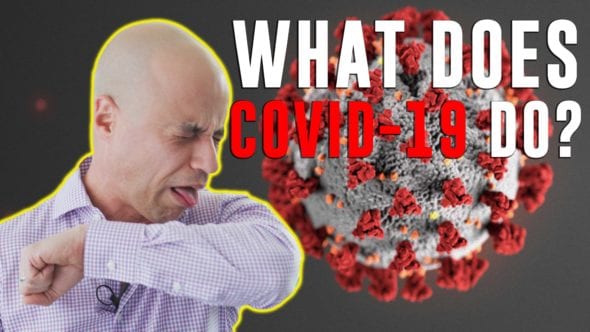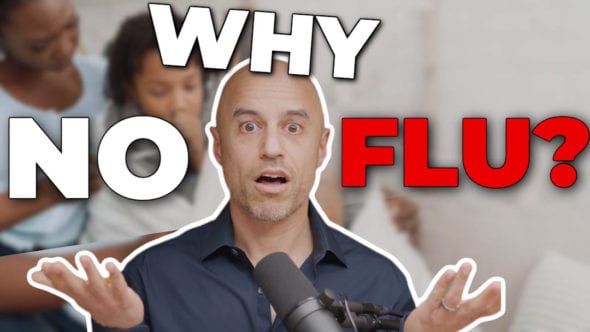Could one virus prevent infection with another? Some science for y’all!
Here’s a Stat News piece with multiple links to references as well. Here’s another episode I did on flu’s disappearance.
Full Transcript Below.
So the question where did flu go is a big one. And it actually matters because understanding the answer to that question may help us understand how we can science the crap out of future pandemics and understand the relationship of different viruses to each other. So let’s backtrack for a second. When the COVID-19 pandemic began and we first started seeing a lot of cases of it, flu, we were having a pretty nasty flu season and in, in the Northern hemisphere, and what happened was it was like wham, suddenly influenza disappeared. Like the flu season abruptly ended, and it was largely gone and coronavirus infections ramped up. And then ramped back down as people started to shut down and everything.
So the question was well was it because we were social distancing, wearing masks, washing hands, cutting down travel. So international travel is a big spread of influenza and closing schools because schools, because unlike coronavirus, influenza is just vastly transmitted by children and schools are a big part of it. And part of the reason that it’s so seasonal is that schools are open in the fall and the winter and closed in the summer and that inverts in the Southern hemisphere. So that’s been the prevailing kind of wisdom about it but there’s another component called viral interference that may play a bigger role than we thought.
And it’s worth talking about this in some length because it may give us future tools to fight pandemics in the future and to help us understand how viruses interact with one another kind of the way our bacteria in our gut, we used to think they were all bad. And now we know, oh no, there’s a lot of beneficial bacteria. And the relationship between these bacteria and their host actually can determine the health of both.
And it may be that viruses have some primitive piece of that. So let’s go back, to understand this let’s go back to 2009 and the Swine Flu H1N1 epidemic. So when this was happening, it was predicted that in Europe, this was H1N1 is gonna blow up because fall was coming, we’re starting to enter flu season and this new pandemic H1N1, we have no real immunity to, so it’s gonna explode. But what they found in France was surprising. It didn’t explode.
Initially. But instead there was an annual epidemic of colds caused by rhinovirus. So rhinovirus is another virus that tends to infect the upper airways and causes coughs and colds. And it becomes kind of an annual thing because people go indoors, it’s cold, they’re stuck inside. And the thing tends to surge. It was surging in France at the time that they were expecting H1N1 to take off, but it didn’t. And as the rhinovirus sort of break out, it started to resolve, H1N1 took off. And people were like, wait a minute here.
Now this idea of two respiratory viruses, not co-infecting the same person at the same time, goes back a long ways actually. In fact, Edward Jenner, who first was kind of playing around with this cow pox inoculation to try to prevent smallpox. So it’s a related virus that if you generate immunity to it might give you some immunity to smallpox. But what he documented was in people that he was testing it on, if they already had viral herpes, the chances of the inoculation working were much less. So there was some kind of interference and it always been interesting that cold season and flu season actually came in slightly separate waves.
So what could be going on? Well, it turns out people actually started looking at this. So back in 2009, they said, okay, well let’s see if there are cases of co-infection between the rhinovirus infected people and H1N1. And it turns out there really wasn’t very much, looking at a pediatric population. If you already had the rhinovirus the chances of you getting infected, being co-infected with H1N1 were quite low. Other studies showed that coinfection with respiratory viruses, these sort of twin-demics that we’ve been talking about, right. Flu and coronavirus, and all that, actually happens much less than you would predict based on just straight statistics. So something’s up.
And then, so further studies looked at this and said, well, what could be going on? Well, if two viruses are trying to infect the same host and they share a similar pathway, like you’re trying to get into the cells using the same ACE-2 receptor, well, it makes sense that they might compete, right? And one might win through sheer replication or luck, or you know, kind of internal super spreader event. But the rhinovirus and the H1N1 influenza virus are totally different cellular entry mechanisms. So it wasn’t that. Now to understand this a little more or you have to step back a bit and go, well, how does the immune system work? There are two real big, broad simplified categories. There’s the adaptive immune system, which is that part of our immunity that is very specific to a specific disease.
So when we’re exposed to SARS-CoV-2, we generate very specific antibody response, T cell, and B cell mediated responses to that specific virus, the spike protein, et cetera. And this is the mechanism of how most vaccines have their primary action, which is you generate a memory response from the adaptive immune system, so that when you see the disease again, that response is very specific to that pathogen and knocks it out. But there’s another aspect of the immune system. Called the innate immune system. And the terminology can get a little confusing, but it basically means this.
There are broader aspects of immunity. For example, the mucus lining our respiratory tracks the cilia that beat away particles from our lungs and broader sort of compounds that we generate. Things called interferons which are agents of the immune system that actually can trigger responses in cells that produce particular proteins and turn on certain genes that are responsible for a broader defense against pathogens. Well, they actually studied this in this rhinovirus influenza situation and what they found was this, and I’m gonna link to everything in a STAT news article that has all the links in it. In human cell cultures, human epithelial cell cultures from, you know, respiratory pathways. If they infected with a rhinovirus, they found it was very difficult to infect with influenza.
You couldn’t infect both. And in fact, even some period of time after the original rhinovirus infection you couldn’t get a good infection with influenza. And when they studied the, what kind of mRNAs were being produced, they found that a lot of genes that are triggered by interferon to start expressing proteins, they’re turned on if you will, by interferon were being expressed in these rhinovirus infected cells. When they used a compound that blocks the effects of interferon and ran the experiment again, influenza could infect.
So their conclusion was well, interferon seemed to play a big role in this viral interference. The rhinovirus that initially infected the cells triggered an interferon response that primed up the innate immune system in these cells, fired up these genes, the proteins that create a kind of defense. When influenza came along, it couldn’t do a whole lot. And that was for a period of time that the genes were turned on and the interferon had its effect when that waned as it did in real life in France, when the rhinovirus epidemic kind of faded away, H1N1 took off.
So how fascinating is that? Now let’s go back to SARS-CoV-2. In this case, SARS completely supplanted influenza, and RSV and these other upper airway, you know, infections that happen the same time a year. So could it be that it’s a mix of everything? So we’ve shut down schools. We’ve closed air travel, we’ve social distanced we’ve masked, but then we’ve also got a large percentage of the population that is infected or has been infected with SARS-CoV-2, fired up interferon response and suppressed the rest of the circulating respiratory viruses, preventing this twin-demic that we were talking about. It’s fascinating to think about because let’s think the ramifications.
You could, theoretically, in the next pandemic or in this one, if we’re smart enough but I doubt we are or fast enough, we don’t know enough yet. We haven’t scienced the crap out of it yet. You could deploy a benign upper respiratory virus. That’s been a sort of weakened to actually we compete and generate an interferon response and short circuit another circulating, dangerous pandemic virus. You could also forget the virus part and actually just design interferon stimulating compounds that just affect the nasal passages like through a nasal mist or something that would generate that local innate immunity that could lower your chances of getting infected.
It makes you wonder whether some of the new adeno virus vectors have some component of this for vaccines that you’re generating a sort of interferon response. And when you think about the new mRNA vaccines and how people complain that they get fevers and muscle aches and chills, those can be interferon mediated effects in our innate immune system. By firing that up that may be a big component of what is leading to the high levels of efficacy of these vaccines. The other question then becomes should we have closed schools? Because if children don’t spread SARS-CoV-2 as much as they spread other rhinoviruses and cold viruses and crap viruses, could they be generating a kind of innate immunity for themselves and that’s speculation.
And then you could argue, you could take it a step further and go well are our masks actually making things worse by preventing us from getting infected with coughs and colds? And the answer is probably not because you’re also potentially preventing SARS-CoV-2. So it’s a bigger shield, than just that then say schools might be. So this is where the discussion becomes really interesting because you can take the science, you start with an observation, viruses don’t tend to co-infection in the respiratory tract. Then look at the molecular biology. Oh, could it be due to interferon? Could it be something else? Then you look at the epidemiology.
Well, is it that we shut down schools, air travel, social distance and masks or is it that there’s actual viral interference going on? So you can look at it at a population level and take all that wisdom and knowledge and apply it then to test new therapeutics, new ideas and new approaches to preventing spread. And that my friends is why science gives me the goosebumps every single time over superstition, over misinformation and over garbage. I just love it so much.
So that being said, if you love what we do become a supporter of the show, share this episode, leave a comment tell us what you think, hit like or dislike. I don’t care what either way it juices Facebook and YouTube broken algorithms to serve it up. And one day we’ll get off that treadmill. And we already are with our Supporter Tribe. So love you guys, hit share, and we are out. Peace.
Category
- The ZDoggMD Show (818)
- Featured Videos (189)
- Doc Vader (142)
- Against Medical Advice (128)
- Medical Humor (95)
- Public Service Announcements (87)
- Music Parodies (74)
- Nurses (59)
- Meditation (46)
- The VPZD Show (38)
- ZVlogg (36)
- ZTalks (28)
- ZBlogg (24)


